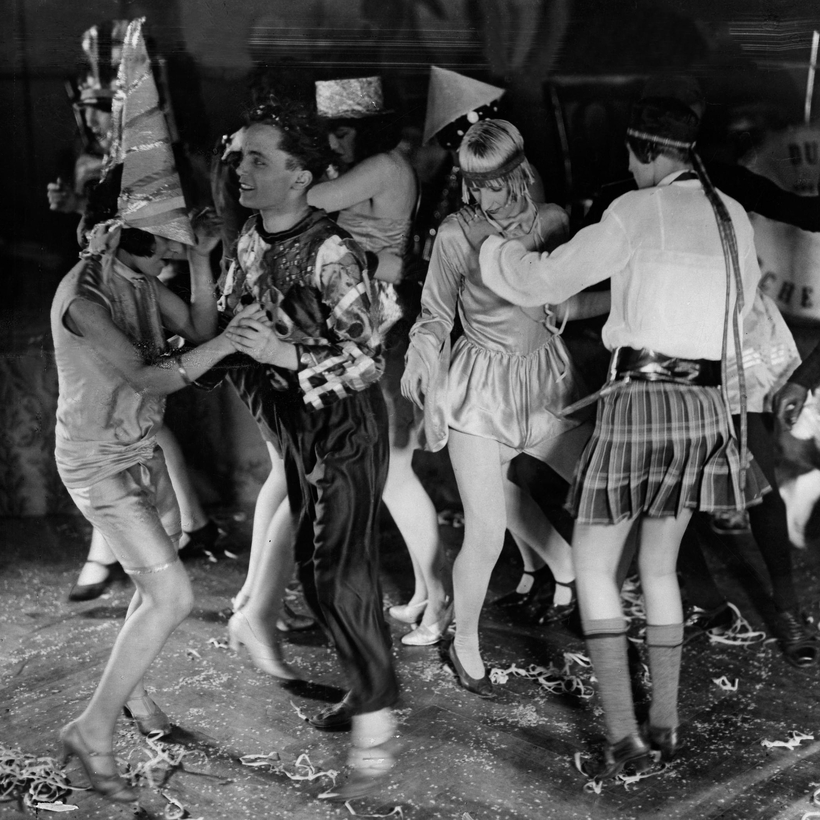In the late 18th century, Weimar was the center of the German Enlightenment. Home to Goethe, Schiller, and the philosopher-poet Johann Gottfried Herder, this small Thuringian town became “Athens on the Ilm.” A little more than a century later, Weimar witnessed a new cultural flowering as the headquarters of the Bauhaus school. The aesthetics could not have been more different. While Weimar classicism harked back to the elegance and nobility of ancient Greece, Bauhaus believed in functionalism, simplicity, mass production, and utilitarianism—the justifications for most of the horrors of modern architecture. Yet they both depended upon a specific cultural and political freedom: the enlightened rule and artistic patronage of Duchess Anna Amalia of Saxe-Weimar-Eisenach on the one hand, and the febrile politics of Germany following her defeat in the First World War and the collapse of the Kaiserreich on the other.
As Harald Jähner shows in this informative and enjoyable study, to live through the Weimar decade—Germany between 1918 and 1933—was a dizzying experience. Four years of unceasing slaughter had ended suddenly and without adequate explanation. The Hohenzollern dynasty, which had ruled the German Empire since 1871 and Brandenburg-Prussia since the 16th century, collapsed overnight. Revolution was in the air and on the streets. The birth of German democracy was chaotic and bloody, with running battles between hastily formed paramilitaries and 354 political assassinations by right-wing extremists between 1919 and 1922 alone.
To those who felt the war had ended too soon or the need to defend the fatherland against the perils of socialism, there was the Freikorps—the right-wing paramilitary—and later the N.S.D.A.P., or Nazi Party. For those who thought the revolution had not gone far enough, there was the Spartacus League and the Communist Party. Yet most Germans, including those returning from the trenches, were against violence and supported the republic. As Jähner points out, the largest veterans’ association, the Imperial Association of War Veterans and War Wounded, which had some 820,000 members, was dominated by the Social Democrats, while the historian Gerd Krumeich has estimated that only 3 percent of returning soldiers were anti-republic. For most Germans the priority was not to fight; the priority was to dance.
To live through the Weimar decade—Germany between 1918 and 1933—was a dizzying experience.
“With the relaxation of the ban on dancing [halls] the people fell on the pleasure so long denied them like a pack of hungry wolves,” reported the Berliner Tageblatt shortly after the end of the war. “Never before has Berlin danced so much and so furiously.” Jähner gives considerable space to dancing: to the shimmy, the foxtrot, and the Charleston. “Where previously couples had drifted across the dancefloor in skilful spinning motions… Now people danced almost on the spot to whipped-up rhythms without touching one another.” It was both energizing and liberating. No longer did a woman have to wait for a man to ask her to dance, she could simply join in as part of a group.
The emancipation of women, as well as the fluidity of sexuality and accepted gender norms, were hallmarks of the Weimar era. Not only were women dancing alone, they were also driving themselves in fast cars. “In the trendsetting glossy magazines, cars and women were a magical combination that kept reappearing in different forms,” writes Jähner. “It was the sign of the changing times. The new age was dashing onwards with a woman at the wheel.” Women adopted men’s hairstyles, most notably the bob, men’s smoking habits, men’s sports, men’s clothes and, “most provocative” of all, the monocle.

To traditionalists, misogynists, zealots, and puritans, this was all deeply disturbing. “That’s enough now!” raged the Berliner Illustrirte Zeitung, of the “masculinization of women.” Hitler called on his supporters to march against “the sinful Babylon of Berlin,” while a young Communist decried the “whimpering saxophones,” the “dirty jokes,” the “half-naked girls” and “corrupt taste” of Berlin’s largest dance hall.
Everything was visceral, and Jähner conveys this intensity of experience to the reader. As he writes in his preface, Vertigo “deals in the feelings, modes and sensations produced by the political attitudes and conflicts of the age; emotional manifestations such as unease, confidence, anxiety, ennui, self-reliance, a desire to consume, a desire to dance, a hunger for experience, pride and hatred.”
If the book has a flaw, it is that it does not properly explore the politics that gave rise to these emotions. But this has been done numerous times elsewhere. What Jähner, a cultural journalist, does, and does extremely well, is to take us inside the dance hall, the boxing club, the photographic studio, and the new open-plan office. He takes us into the minds of the iconoclasts: those who wanted to “smash” the Old World—be it classical architecture, capitalism, or traditional gender roles–and of those who wanted to preserve it.
Vertigo also casts an unsettling light on our own times. The Weimar Republic might have survived, but the Great Depression caused people to yield to demagogues and extremists. Rising nationalism, the search for scapegoats, disinformation, and populism was lapped up by ever increasing numbers of German men and women. We must hope that our own age remembers the consequences.
Tim Bouverie is the author of Appeasement: Chamberlain, Hitler, Churchill, and the Road to War


